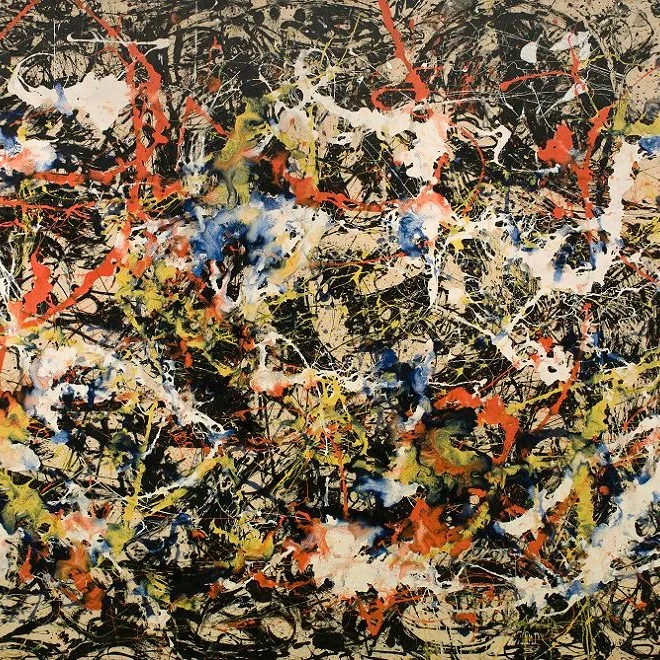High Modernism: Death of Beauty
The tendency toward dogmatic absolutism that had characterised artistic production since the Futurists would reach is zenith in the high Modernism of the post-WWII period.
Now the ‘new’ was not merely the noblest of artistic virtues, it was an absolute imperative. The old had to make way for the new, no matter what the cost. And no artist expecting to be taken seriously could exhibit even the vaguest hint of reactionism. The first wave of modernists had had the right idea, but they’d been too meek. Schönberg, Picasso and co. had left too tangible a connection to an ancient past they should have ruthlessly denounced and overthrown.
In music, it would be up to three composers in particular to rectify this botch-up: Pierre Boulez, Karlheinz Stockhausen and John Cage. Boulez and Stockhausen, in works like Polyphonie X and Kreuzspiel (1951), extended Schönberg’s tonal serialism to all other musical parameters, including dynamics and durations, creating scores that were mathematically, almost maniacally predetermined.
Going to the opposite extreme, Cage, father of indeterminate music, sought to minimise the role of the composer, if not eliminate it altogether. In his 4’33’ (1952), the performer is instructed to sit with his instrument in front of a blank score in complete silence, and not make a single sound from the beginning of the piece to the end. With works like his No. 5, 1948, painter Jackson Pollock developed the abstractism championed by Kandinsky a step further, and did away with all discernible, earthly subject matter, filling his work, instead, with unidentifiable, amorphous spatters.
It is no small irony that, in spite of the austere and hard-lined Modernist approach to aesthetics, there never came to be a sole orthodox code universally seen as representing the movement more faithfully than any other. Because there was no Modernist ‘central governing body’, and also because Modernism was individualistic in essence, there emerged, instead, a curious situation in which the prevailing aesthetic climate was, at once, hyper-dogmatic and hyper-pluralistic; one in which there existed a multitude of related but differing schools, each convinced that it, more than any other, held the key to the future of Art.
Heady modernists who had stayed true to Nietzsche’s Übermensch ideal and Sartre’s concept of existential freedom, filled the nihilistic void with aesthetic values that they, as god-like aesthetes, had judged themselves competent to create and prescribe. The prevailing valuelessness had afforded them this total creative freedom, given them a sense of duty to exercise it, and legitimated their efforts to do so.
Modernism rigorously applied these nihilistic conclusions to Art. It did away with Beauty in much same way as it had done away with practically everything else, leaving Art stripped of the very core ingredient that had always defined it. To the late Romantic even, Art in the 1950s and ‘60s would have appeared unrecognisable. Never in history had there been such a seismic shift in ideology, never such a radical ‘transvaluation of values’, never such a cold-blooded ‘aestheticide’.
Without necessarily knowing it, all major Modernist artists from Schönberg to Cage, from Picasso to Pollock, had systematically broken down Beauty. By the time the Fluxus artists rose to prominence in the ‘60s, Beauty as we’d known it for five hundred years was no more.
‘Beauty is dead’, Nietzsche may well have said. ‘And we, murderers of murderers, have killed it’.


